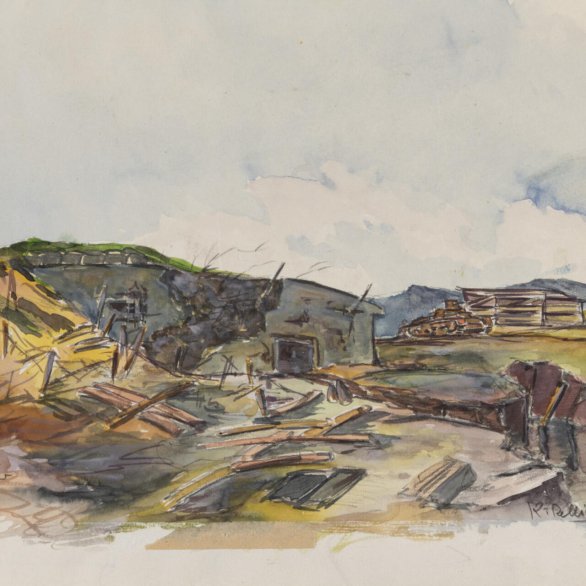Stuttgart's National Socialists planned a municipal art museum with a graphics collection. The culture and art department was guided by a nationalist and racist world view. It was the birth of a völkisch collection that was intended to serve propaganda - however, the collection policy was not without contradictions and there were unusual acquisitions.
For the first time, the exhibition also shows the collection of war paintings, whose origins were shrouded in mystery until recently. It also looks at artists who were members of the NSDAP and profited from fascism. The restitution case of the Jewish merchant and art collector Max Rosenfeld (1867-1943) from Stuttgart illustrates that works of art seized as a result of Nazi persecution also ended up in the art collection of the Kunstmuseum Stuttgart.
For the first time, the exhibition also shows the collection of war paintings, whose origins were shrouded in mystery until recently. It also looks at artists who were members of the NSDAP and profited from fascism. The restitution case of the Jewish merchant and art collector Max Rosenfeld (1867-1943) from Stuttgart illustrates that works of art seized as a result of Nazi persecution also ended up in the art collection of the Kunstmuseum Stuttgart.

